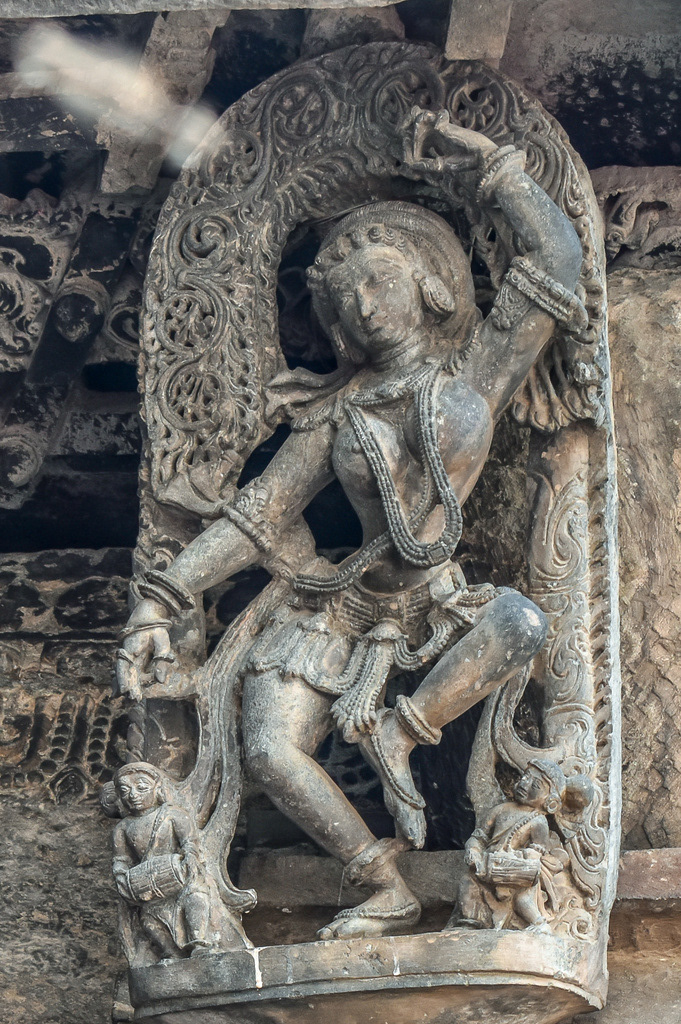
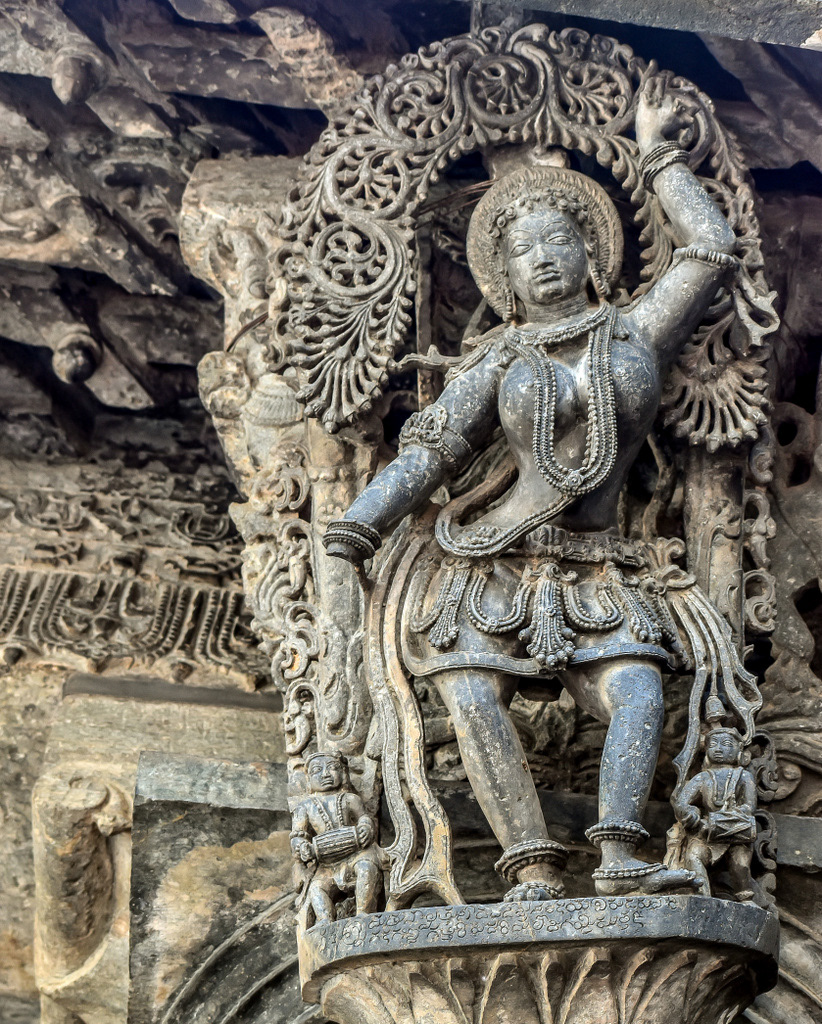
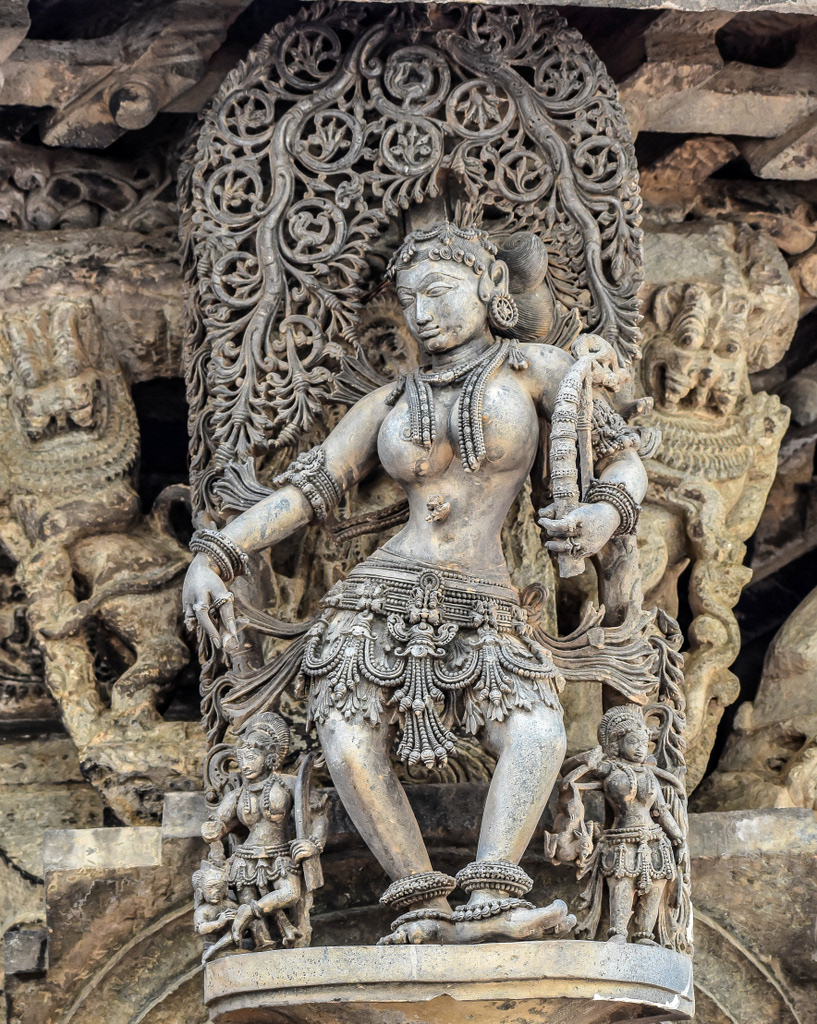


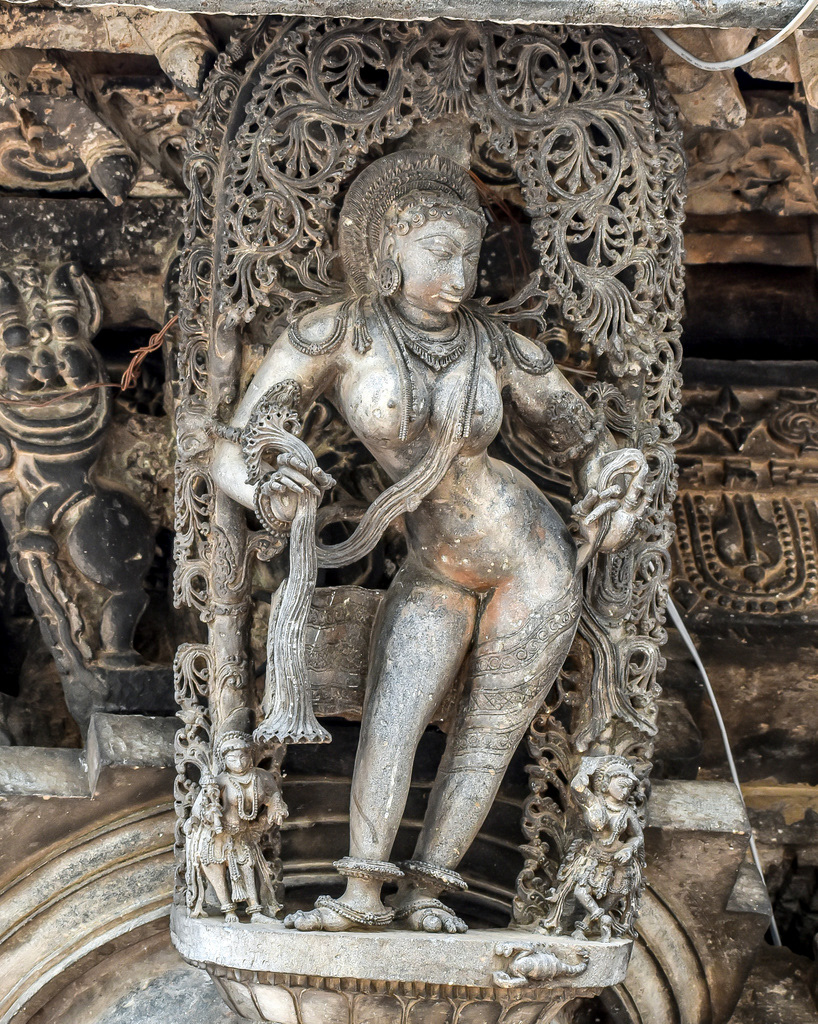
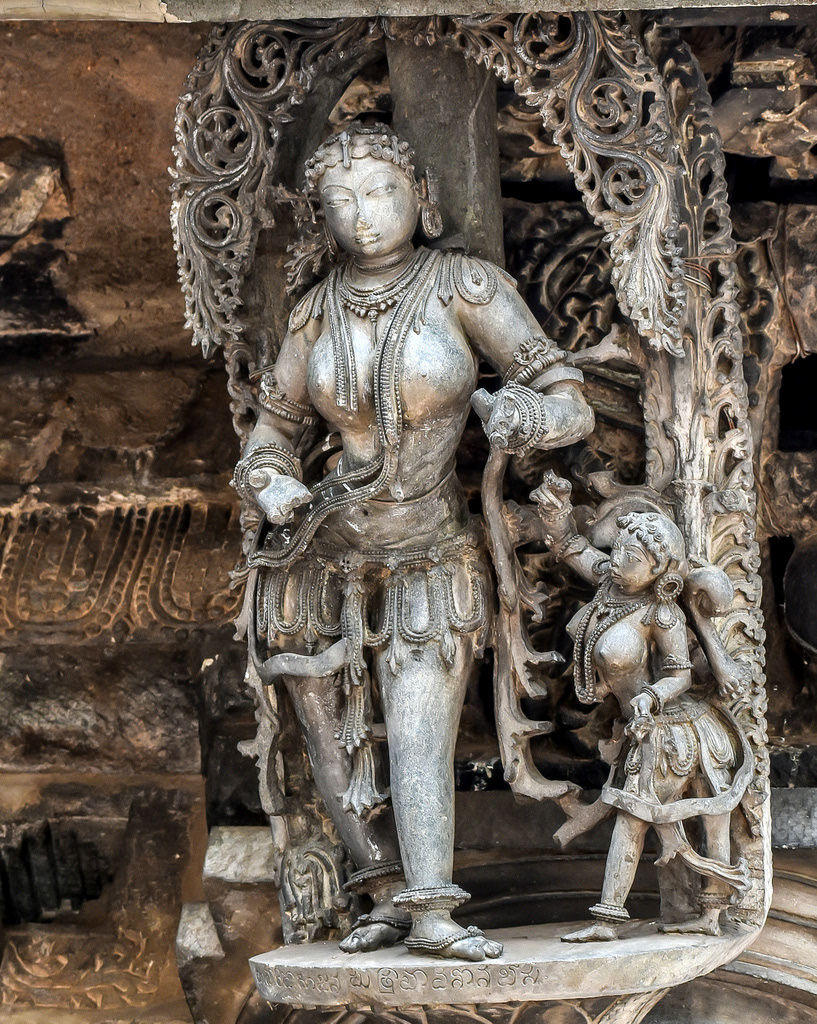
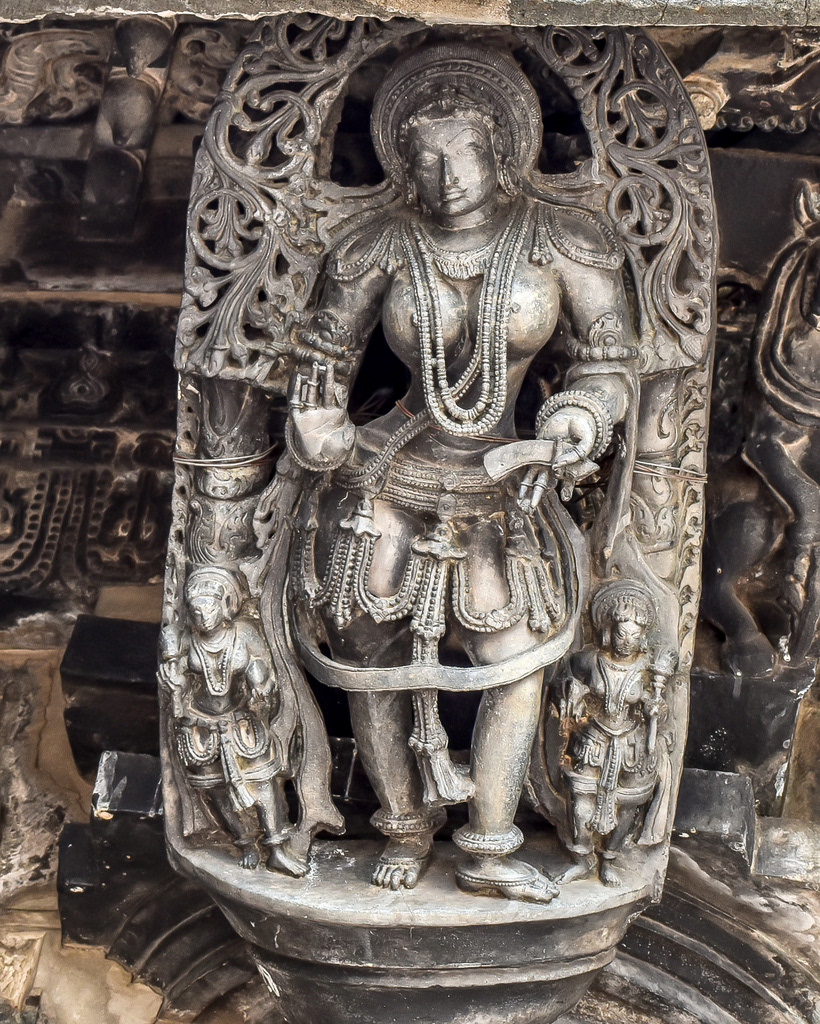
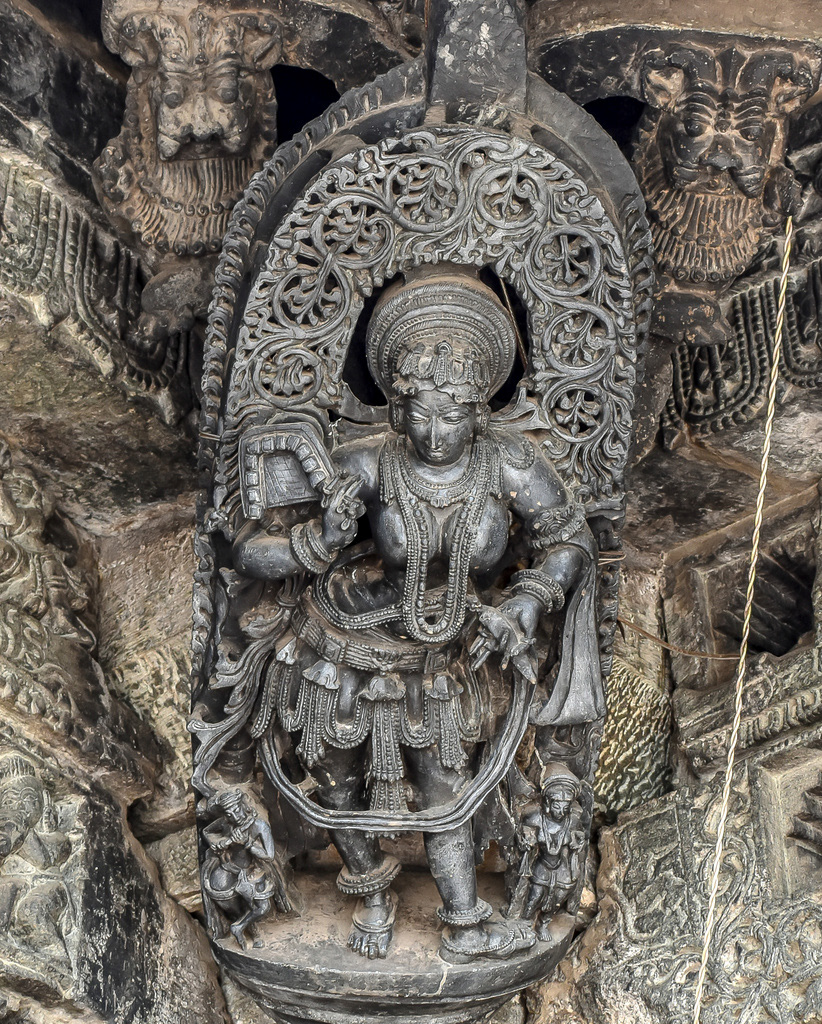
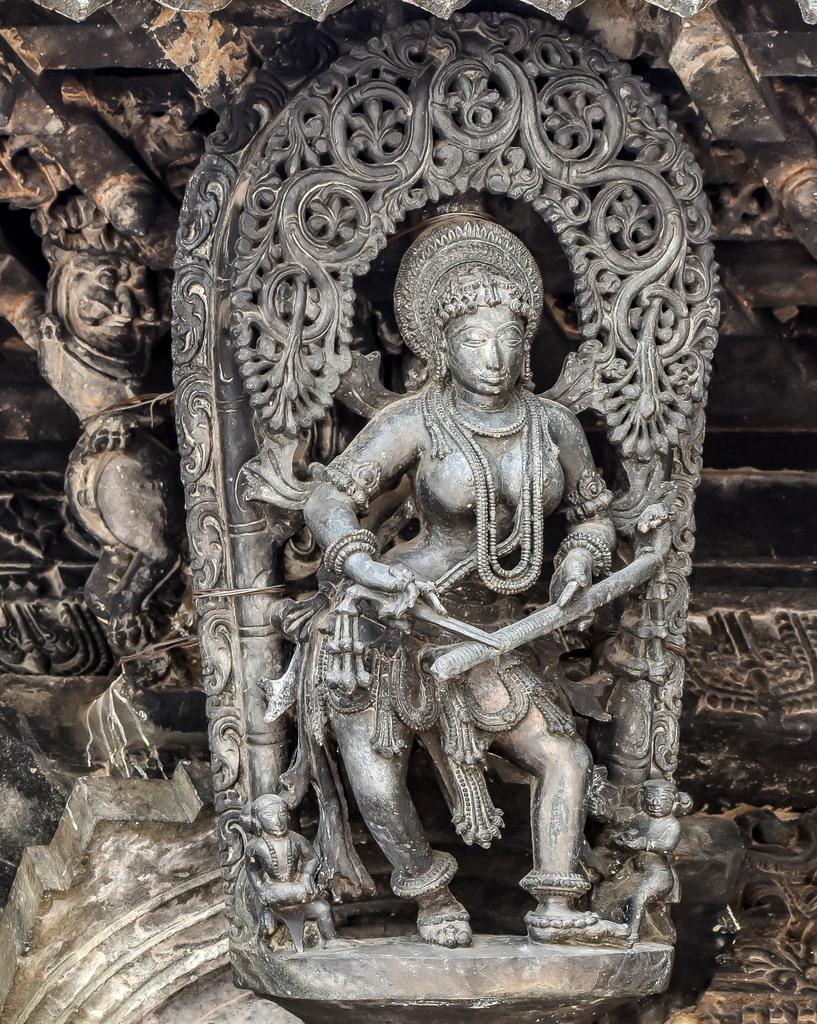
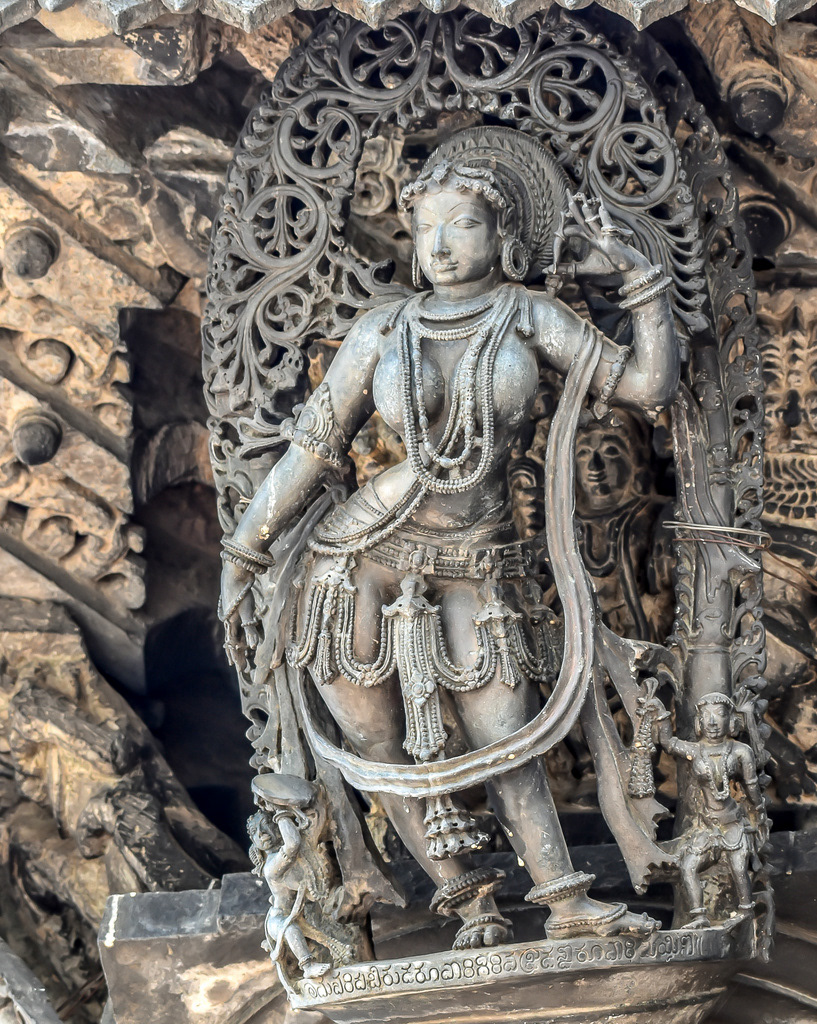

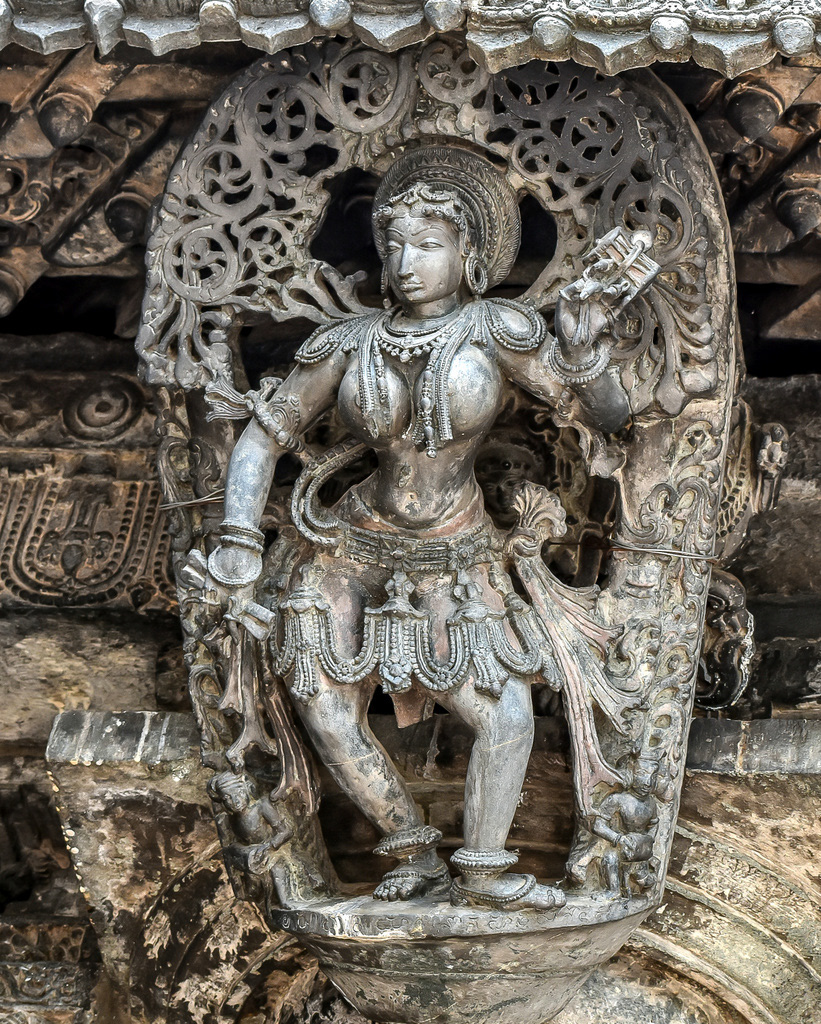


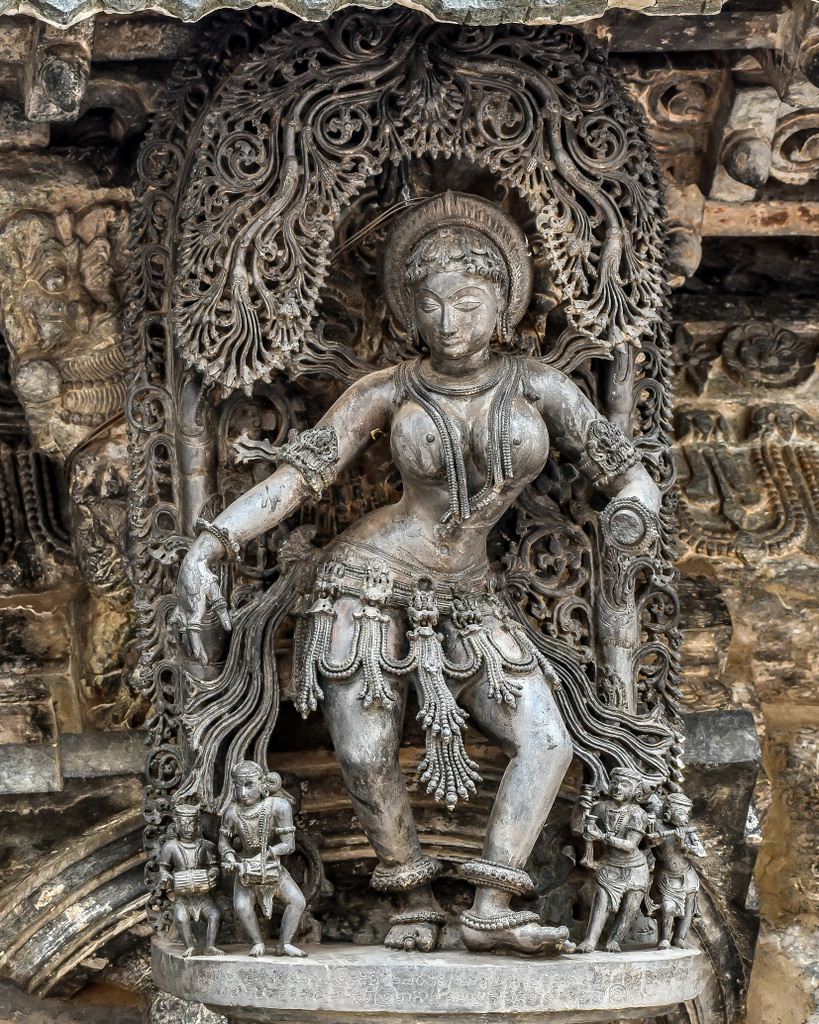
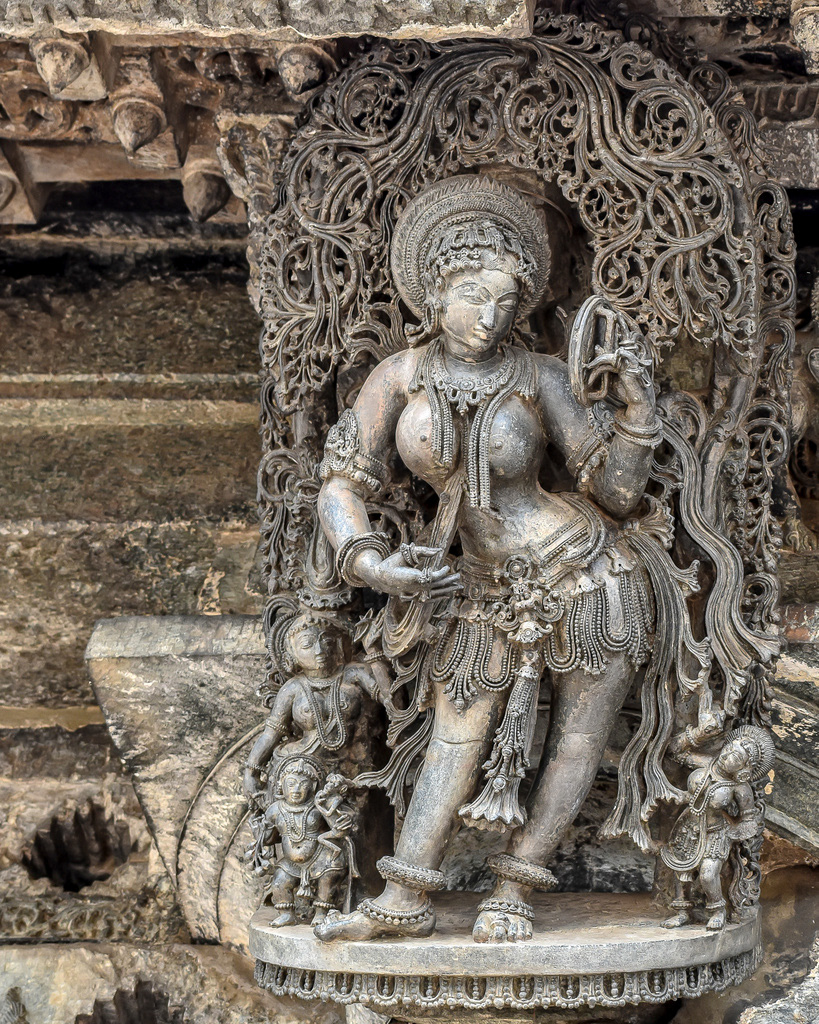

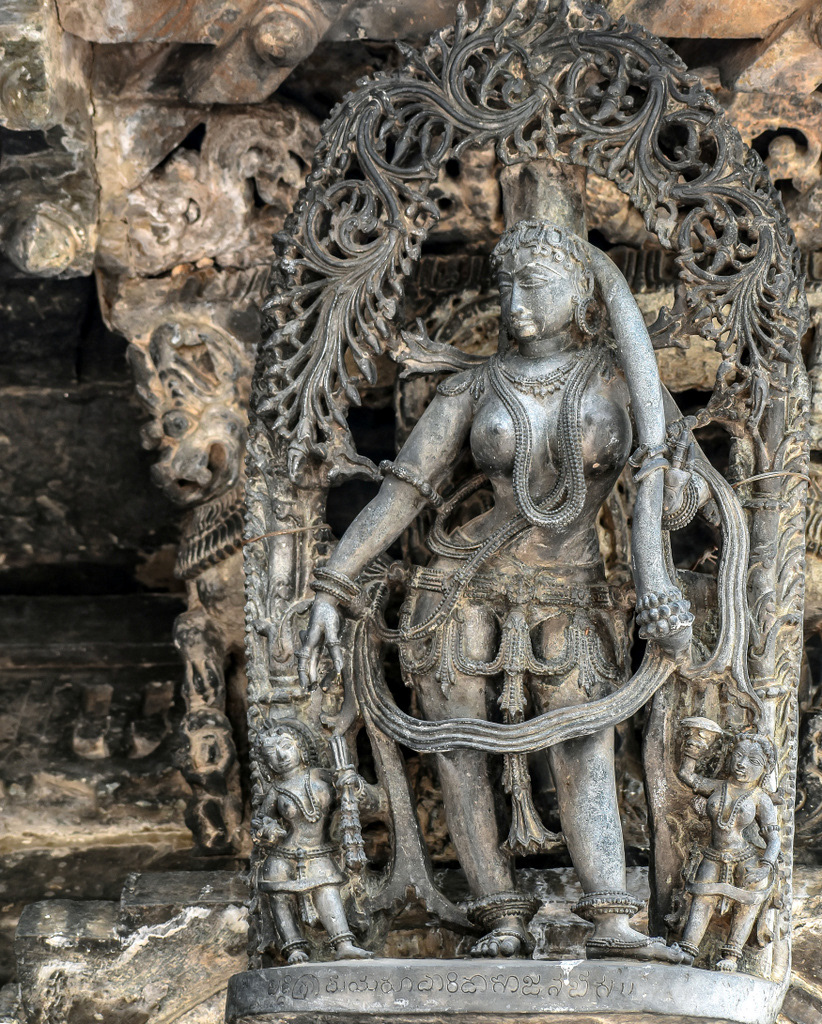
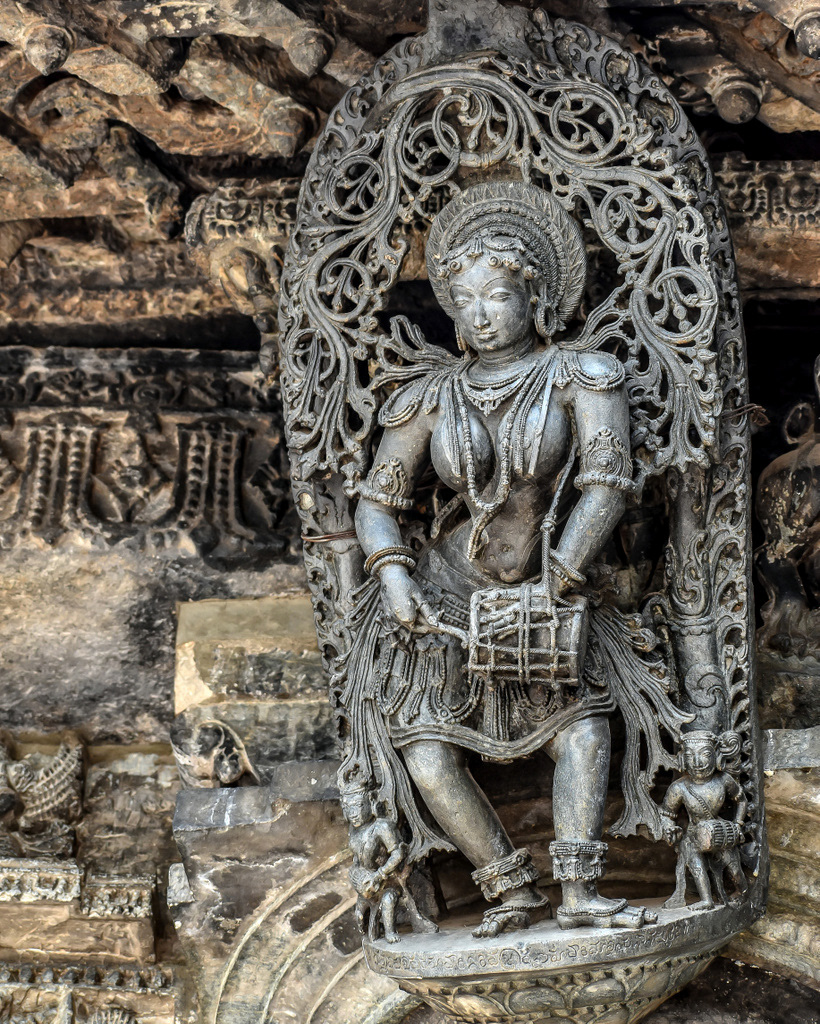

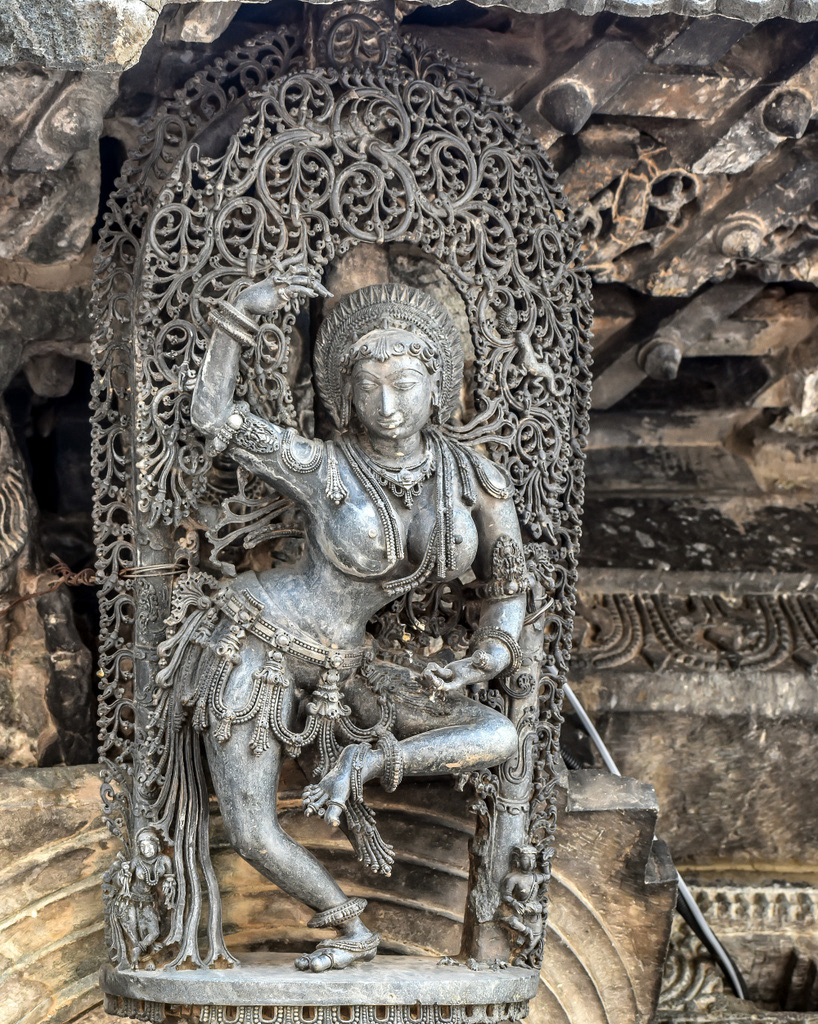
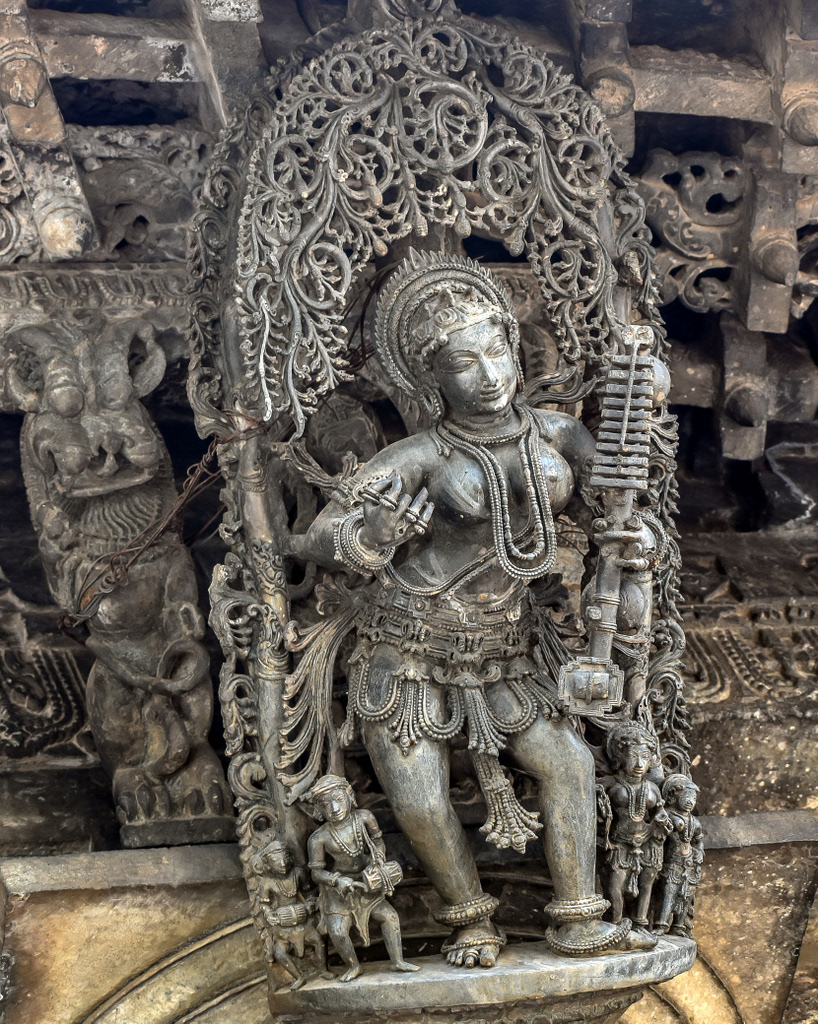
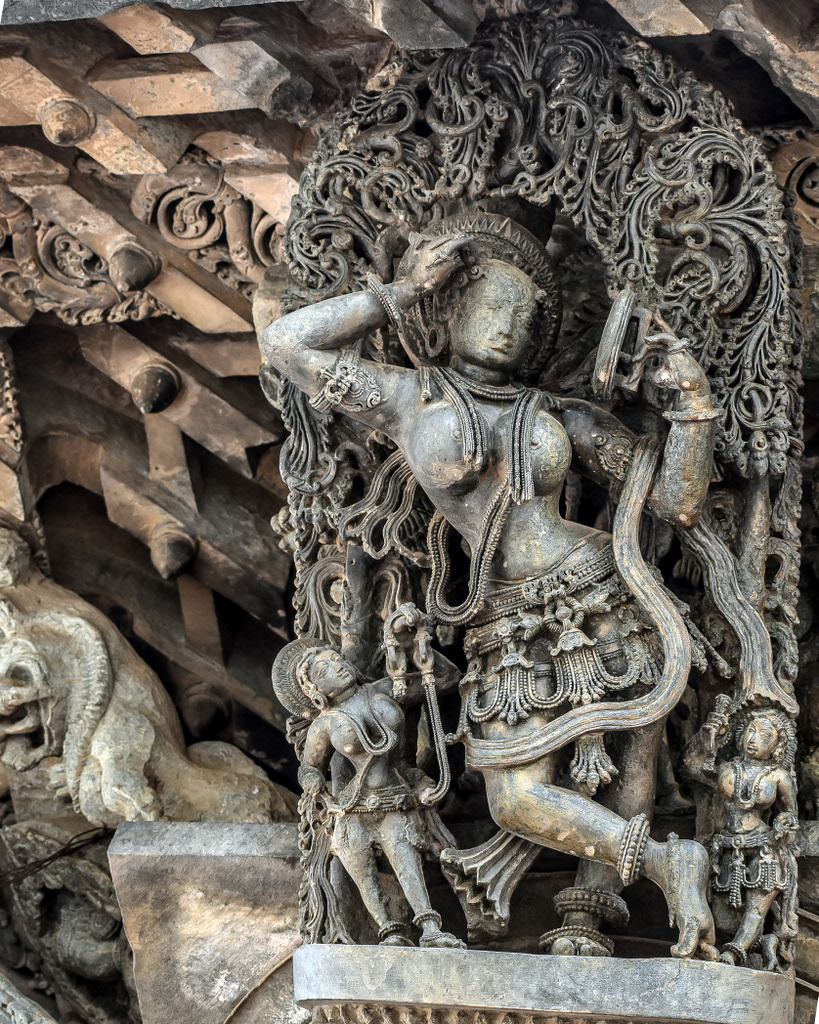


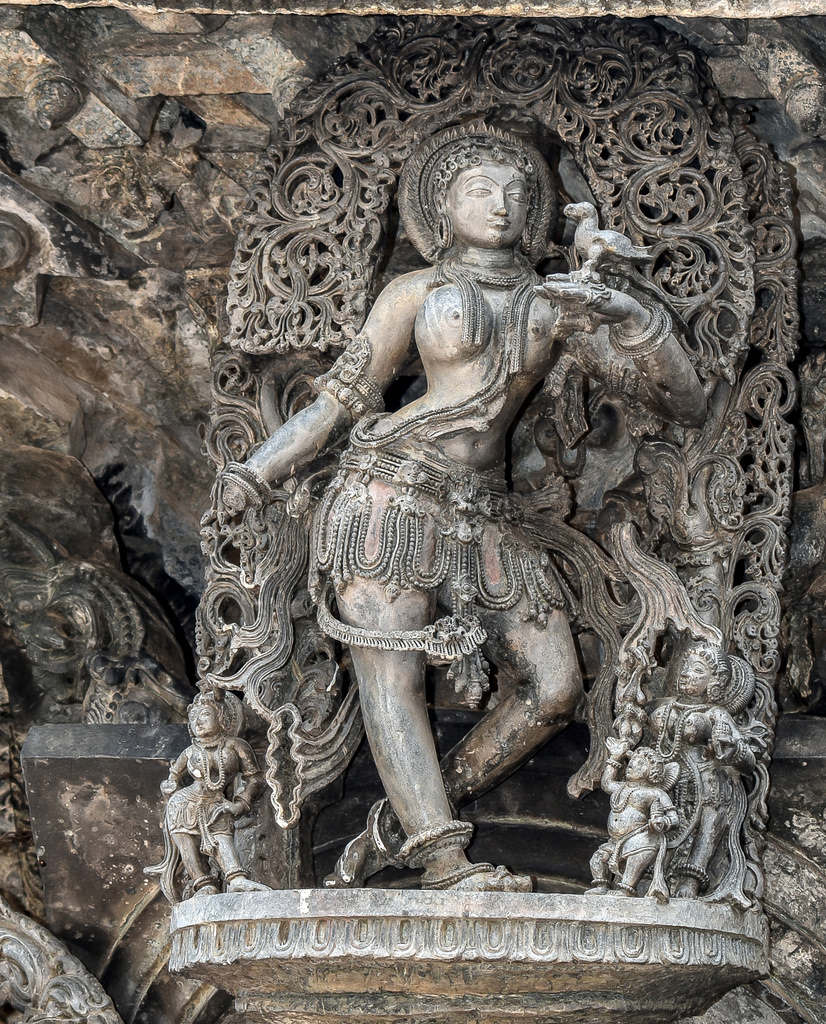

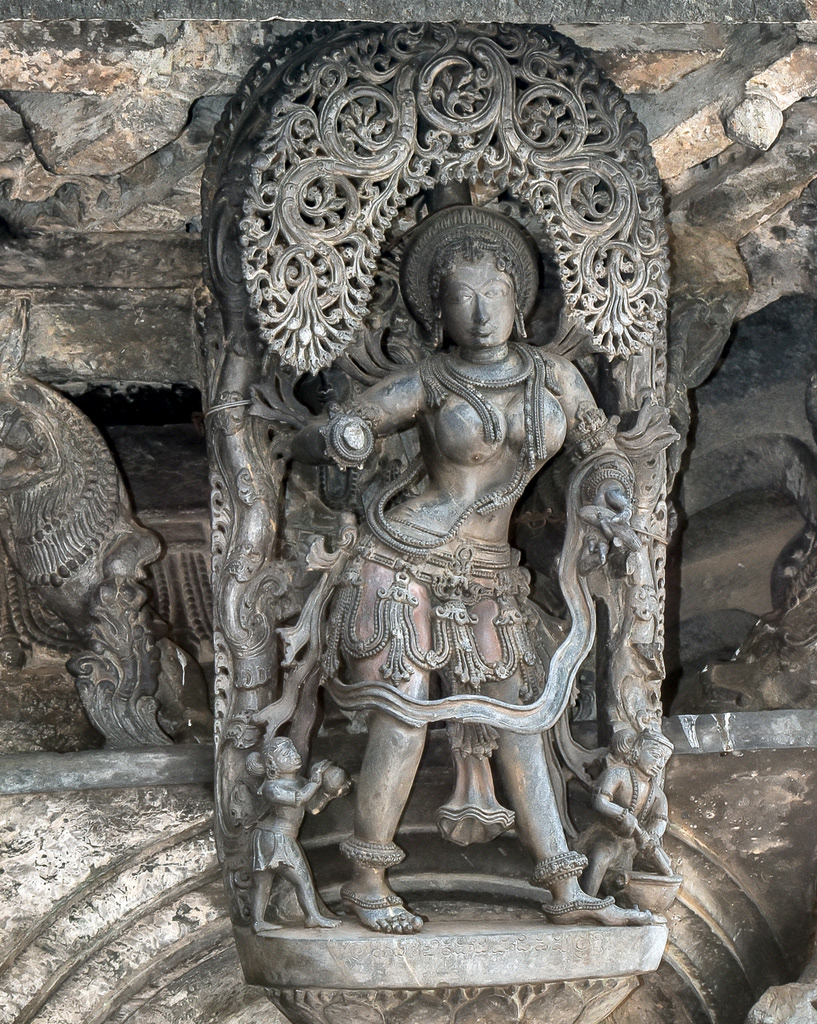

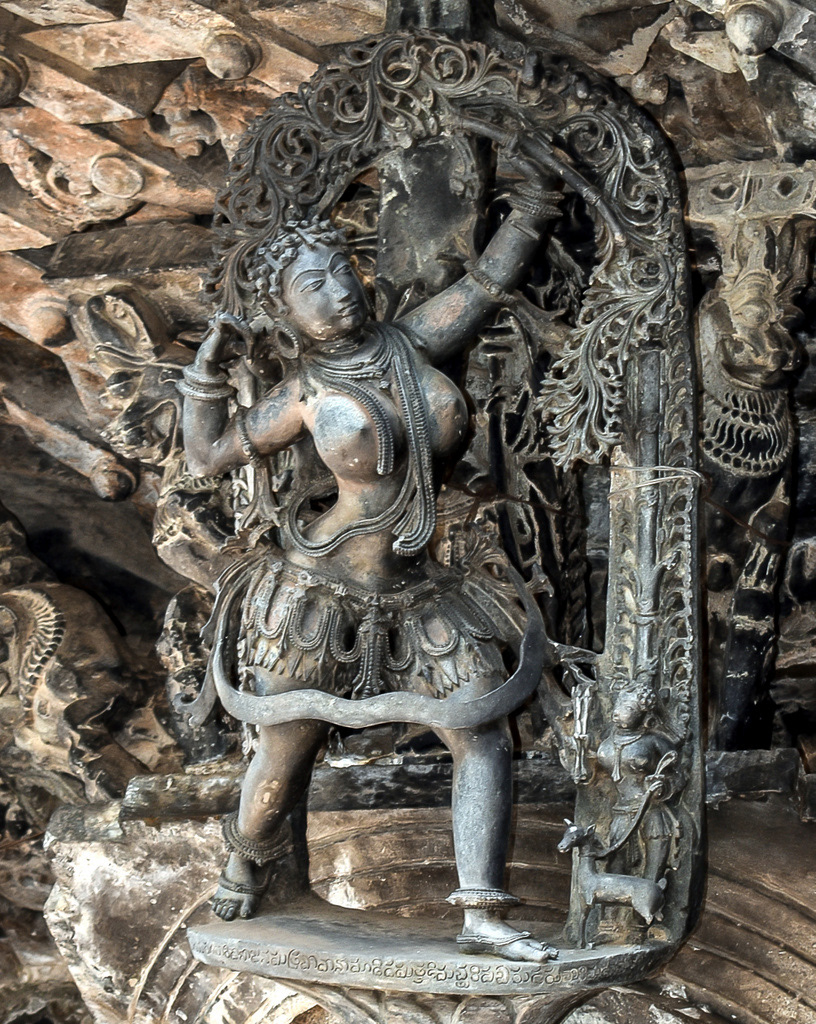
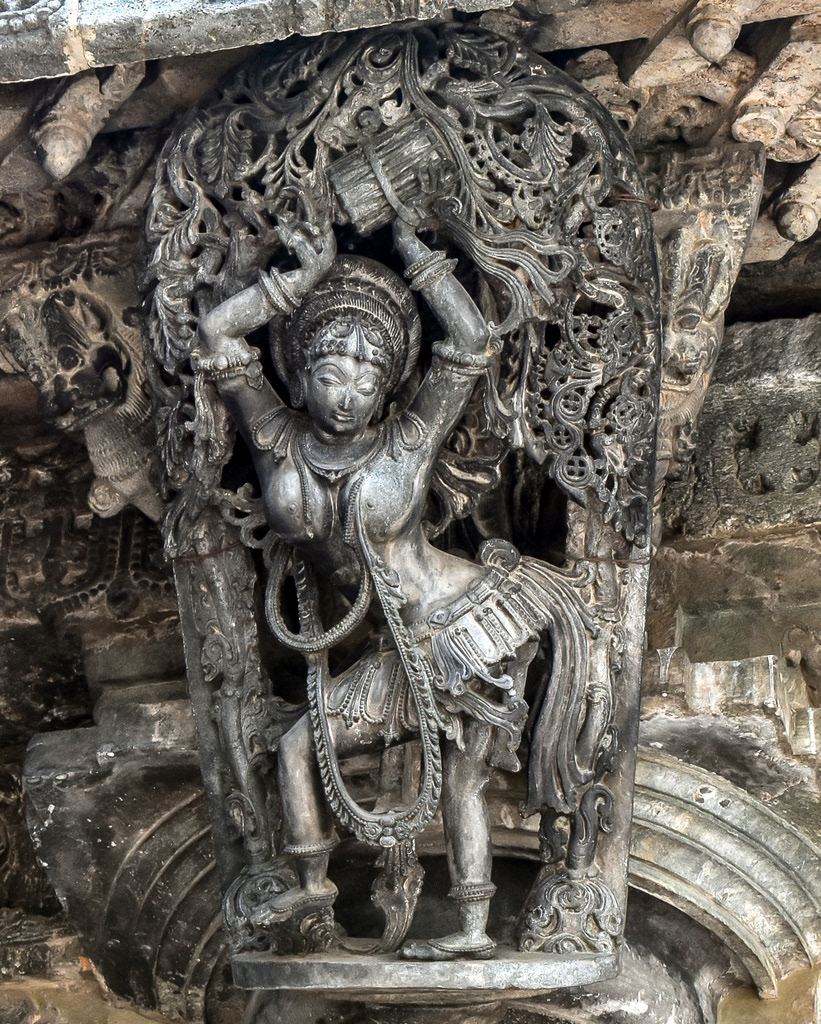
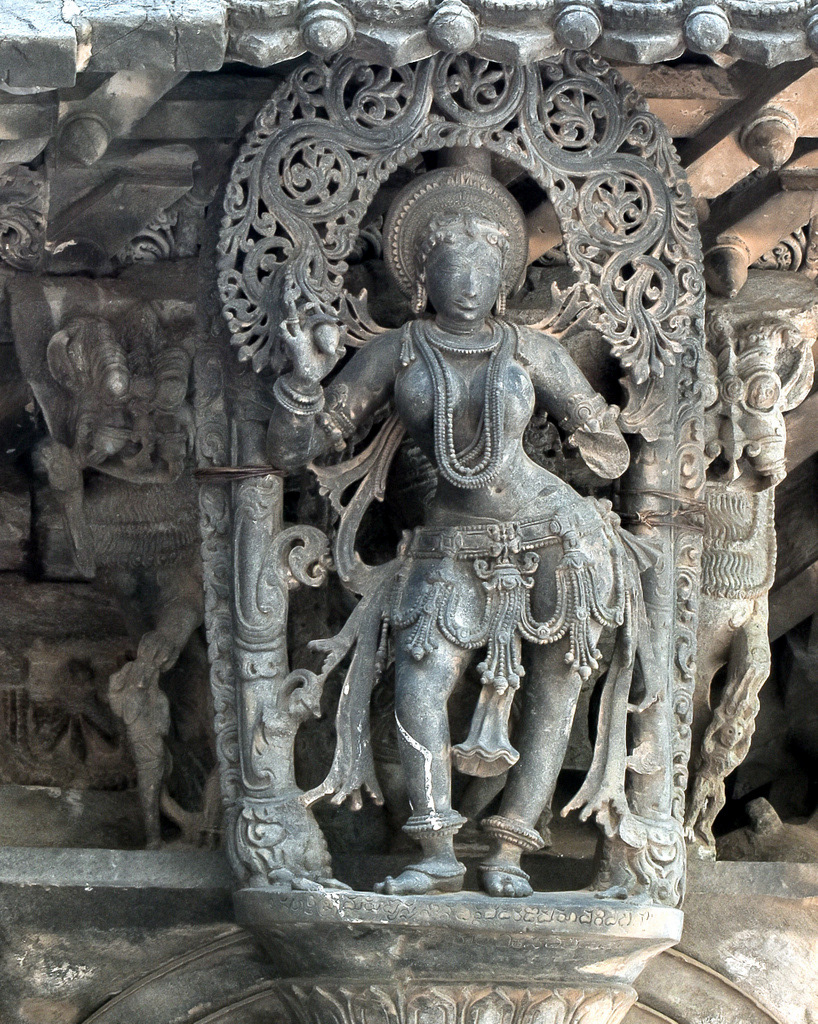
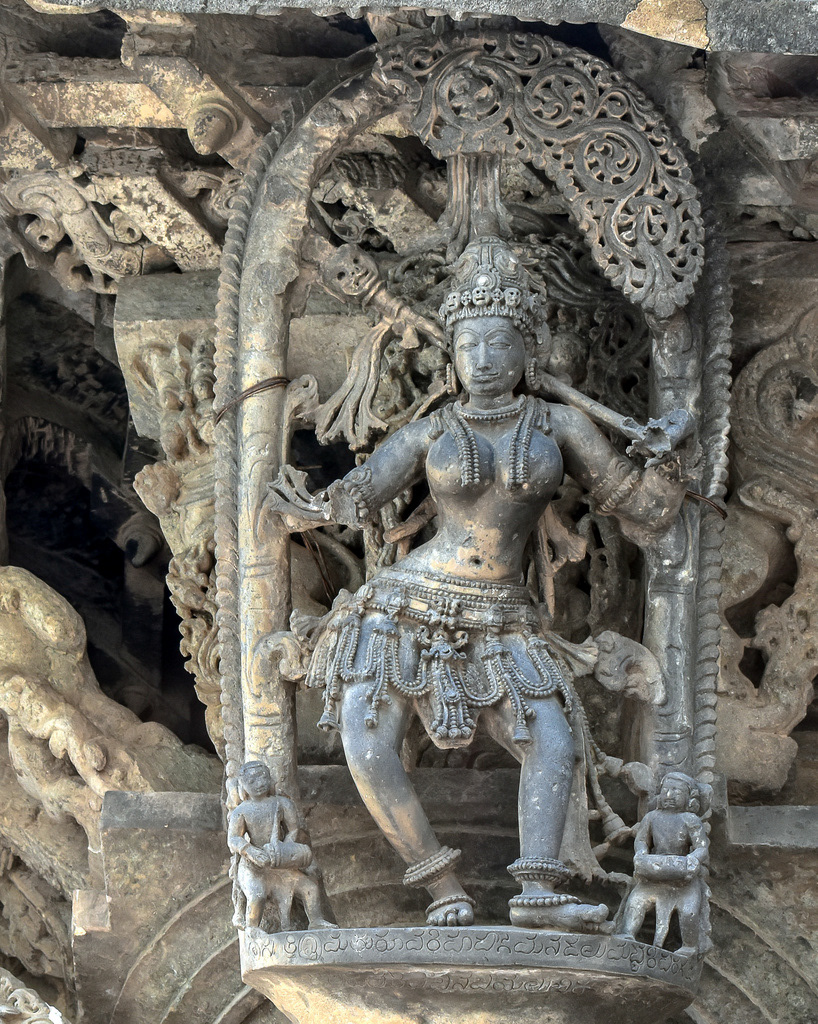

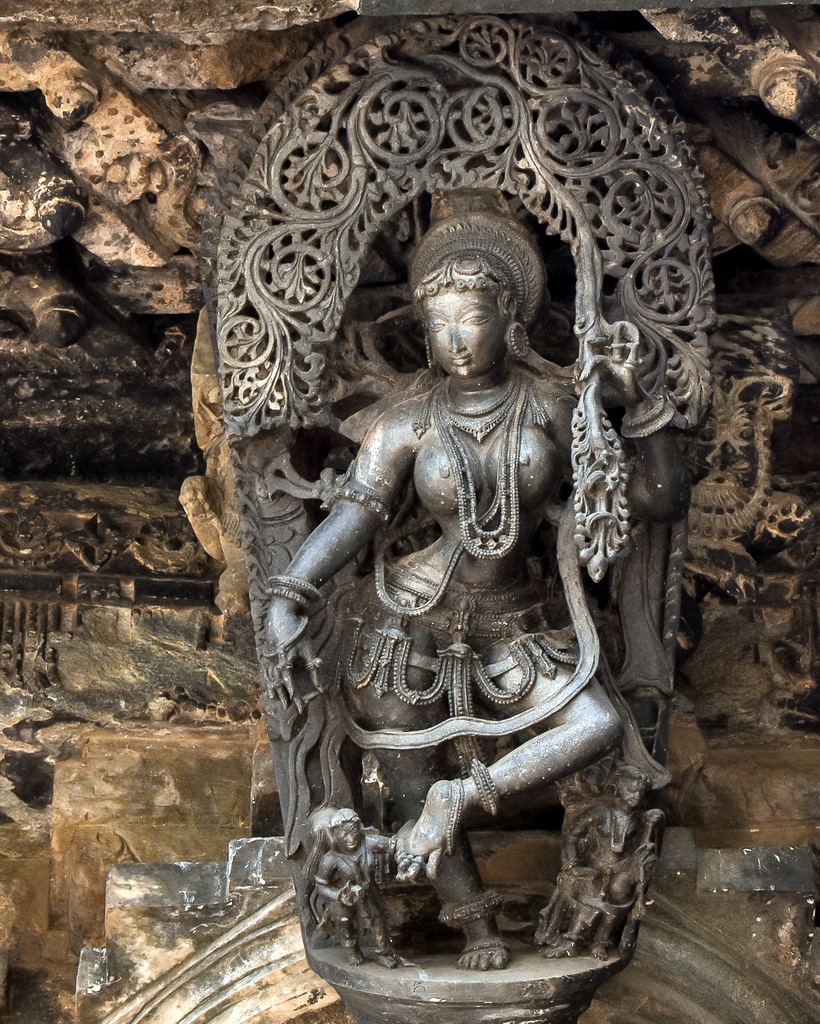
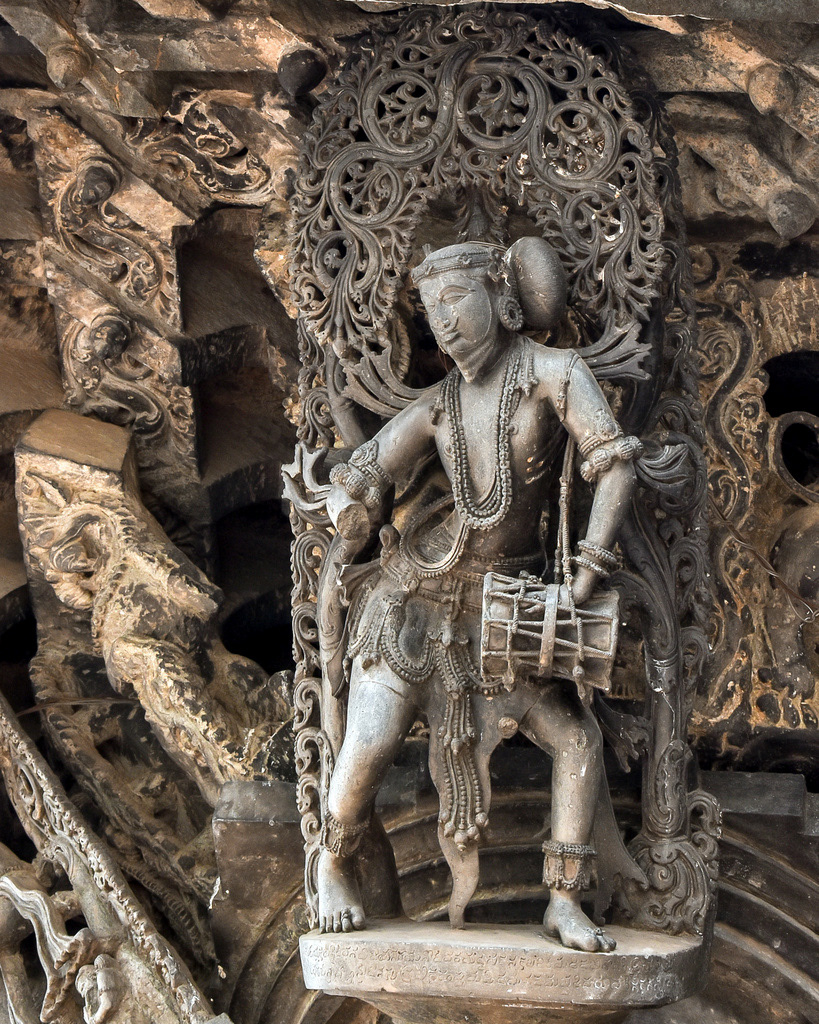
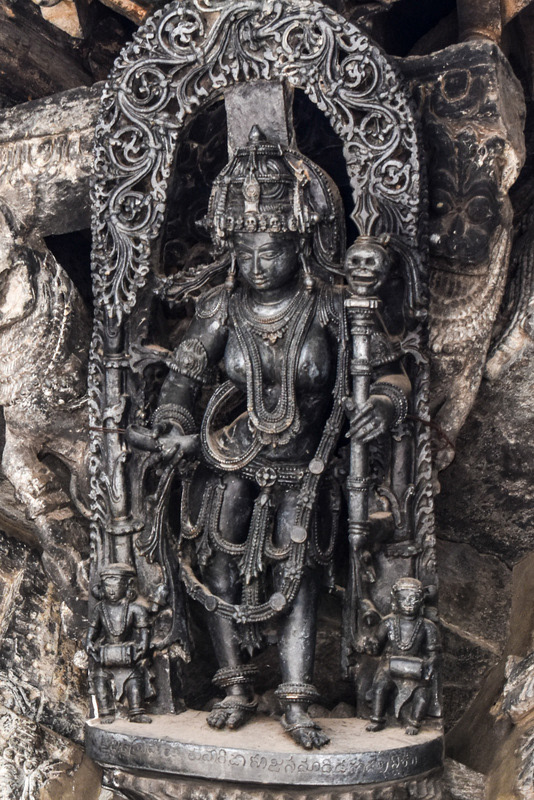
A salabhanjika or shalabhanjika is the sculpture of a woman, displaying stylized feminine features. The name of these figures comes from the Sanskrit śālabhañjikā meaning 'breaking a branch of a sala tree'. They are also known as madanakai, madanika or shilabalika. The shalabhanjika is a standard decorative element of Indian sculpture, a graceful stone sculpture representing a young female under a stylized tree in various poses, such as dancing, grooming herself or playing a musical instrument. The salabhanjika's female features, like breasts and hips, are often exaggerated. Frequently these sculpted figures display complex hairdos and an abundance of jewelry. Over the course of time the shalabhanjika became figures used as ornamental carvings, usually located in the area where worshipers engage in circumambulation, near the garbhagriha of many Hindu temples. Placed at an angle, salabhanjika figures also were used in temple architecture as a bracket figures. Some of the most renowned salabhanjika sculptures are to be found in the 12th-century Belur Hoysala temple. There were originally 40 madanikas between the eaves on the outer walls of the hall of which 38 have survived, while one is replaced and another one is missing. They are depicted in various forms, such as dancers, musicians and drummers, and are rarely erotic in nature. Some madanikas that usually are popular with tourists are the Darpana Sundari (meaning,"beauty with mirror"), "The lady with the parrot", "The huntress" and Bhasma mohini. Many of the Hoysala sculptors have signed their sculptures. They engraved their names, titles and even the place of their origin at the foot of their art work. Dasoja and his son Chavana who were from Balligavi in modern Shimoga district have been credited with the work on four and five madanikas. Ruvari Mallitamma was a prolific artist to whom the rest are attributed. The 38 Madanikas in the outer walls, not in any particular order,





































